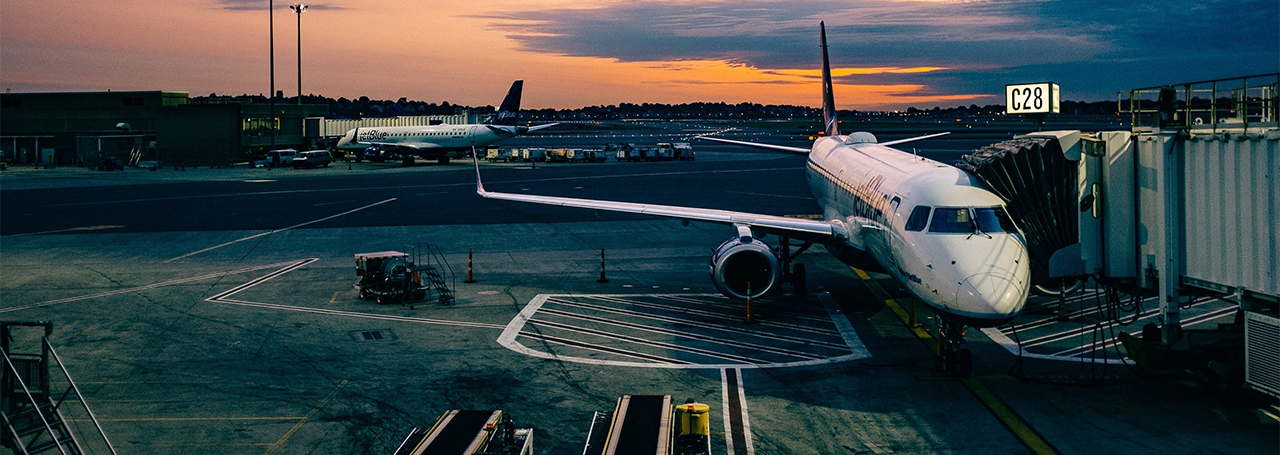
Aerospace
 At Supplyline ID, we proudly supply aerospace and aviation labels to OEMs, Tier I, Tier II, and Tier III aerospace suppliers and manufacturers, either directly or through our trusted partners.
At Supplyline ID, we proudly supply aerospace and aviation labels to OEMs, Tier I, Tier II, and Tier III aerospace suppliers and manufacturers, either directly or through our trusted partners.
Our valued clients include industry giants like Boeing and Airbus, as well as key Tier II and Tier III suppliers, including Bombardier and many others.
While we collaborate with many prominent companies in the aerospace sector, confidentiality is paramount in our relationships. Therefore, details about specific partnerships can only be discussed with serious inquiries.
If you’re an end user seeking to understand why Supplyline ID is a trusted partner for leading aerospace companies, we invite you to get in touch. Discover how our reliable aerospace solutions can elevate your business to new heights.
EXPLORE VARIOUS TYPES OF AEROSPACE LABELS | TRUSTED SOLUTIONS FROM SUPPLYLINE ID
We provide a huge range of labels designed to meet the stringent needs of aerospace manufacturing, parts identification, distribution, and the entire supply chain. Our labels are engineered for precision and reliability, ensuring that critical aerospace and avionics components are accurately marked.
Aerospace labels are used on essential flight parts, including engine components, cables, and black box recorders, ensuring seamless identification and traceability throughout their lifecycle.
We also offer handling and shipping labels, such as “Fragile” and “This Way Up” (with orientation arrows), to help ensure proper care during cargo handling and shipping. These labels play a crucial role in safeguarding sensitive aerospace equipment during transit. Our labels are designed to communicate key information, including:
- Heat and moisture sensitivity
- Fragility and risk of breakage
- Proper orientation (top/bottom)
- Center of gravity positioning
- Safe points for loading and slinging
Specialised Labels for Safe and Compliant Shipping:
Our comprehensive label range includes specialised markings to meet a variety of regulatory and safety requirements, ensuring your shipments are handled with care and comply with industry standards. These labels include:
| Lithium Battery Handling Labels | Cargo Aircraft Only Labels | Excepted Quantities Labels |
| IATA Time & Temperature Sensitive Labels | IATA Magnetized Material Labels | Orientation Arrows |
| Overpack Labels | Elevated Temperature Labels | Keep Away From Heat Labels |
| Fragile Labels | Live Animals Labels | Fumigation Signs |
| All our labels are fully compliant with national and international regulations including ADR, RID, IATA and IMDG guidelines, ensuring safe, legal transportation across borders. | ||
Further Labels From Our Range Include:
The Cargo Aircraft Only label (CAO) is mandatory for all consignments containing dangerous goods shipped by cargo aircraft, helping to ensure proper handling during air transport.
By choosing our labels, you guarantee full compliance with global shipping standards while enhancing safety and visibility for your cargo.
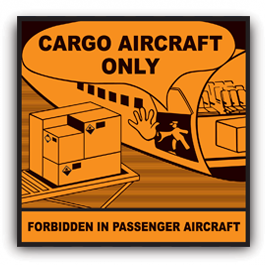
TYPES OF LITHIUM BATTERIES
Lithium batteries are classified into two main types: lithium-metal and lithium-ion.
Lithium-Metal Batteries
Lithium-metal batteries are non-rechargeable and are known for their high energy density compared to other non-rechargeable batteries. These batteries contain metallic lithium and are commonly used in devices that require long-lasting power, such as:
- Watches
- Pacemakers
- Hearing aids
- Cameras
- Calculators
Lithium-Ion Batteries
These were developed after lithium-metal batteries, are rechargeable and offer high energy density without containing metallic lithium. Although generally considered more stable than their metal counterparts, they still require careful handling due to potential safety risks. Lithium-ion batteries are widely used in consumer electronics, including:
- Mobile phones
- Computers
- Laptops
Both types of lithium batteries play a crucial role in powering a wide range of devices, offering versatility and energy efficiency for various applications.
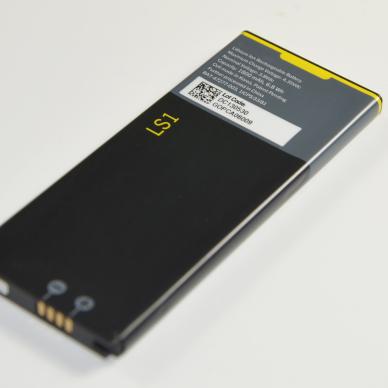
WHY ARE LITHIUM BATTERIES DANGEROUS?
Lithium batteries pose significant safety risks due to their potential to experience a phenomenon known as thermal runaway. This occurs when the internal circuitry of the battery is compromised, causing a rapid rise in temperature within one or more cells.
As the heat builds, the affected cells can vent hot gases, which may trigger a chain reaction by increasing the temperature in neighboring cells. This can ultimately lead to ignition and a fire. The risk is heightened because lithium batteries tend to ignite and burn violently when exposed to heat or fire, making them particularly dangerous when stored or shipped in large quantities.
For instance, in air transport, a fire involving lithium batteries can quickly escalate, intensifying the severity of the situation. Even a small incident can lead to an uncontrollable fire, posing serious hazards to aircraft safety.
Due to these risks, strict regulations govern the handling, storage, and transportation of lithium batteries, especially in bulk shipments.
CLASSIFICATION OF LITHIUM BATTERIES
Lithium batteries are classified as Class 9 – Miscellaneous dangerous goods, due to the hazards they pose during transport. The specific classification depends on the type and packaging of the batteries::
- UN 3090, Lithium metal batteries (shipped by themselves)
- UN 3480, Lithium ion batteries (shipped by themselves)
- UN 3091, Lithium metal batteries contained in equipment or packed separately with equipment
- UN 3481, Lithium ion batteries contained in equipment or packed separately with equipment.
The labelling requirements for lithium batteries differ depending on how the batteries are transported:
- Contained in equipment (for example, a watch, calculator or laptop).
- Packed with equipment (for example, a power tool shipped alongside a spare battery).
- In small quantities (which may be covered by Limited Quantities – the lowest of the four levels of the Carriage of Dangerous Goods)
- Small quantities: Covered under Limited Quantities provisions (the lowest level of dangerous goods classification).
- Very small quantities: Exempt from dangerous goods regulations, such as two batteries installed in equipment.
It is essential to properly label packages containing lithium batteries in accordance with dangerous goods regulations. The two new lithium battery labels, as shown below, are mandatory for all modes of transport.
Ensure Compliance with International Shipping Standards – safely and legally transport Lithium Batteries
The New Lithium Battery Label
The amended labelling requirements for IATA, ADR, and IMDG introduce two new Lithium Battery labels. One of these is the updated Lithium Battery Mark, which must include a new symbol, the relevant UN number, and a contact telephone number.
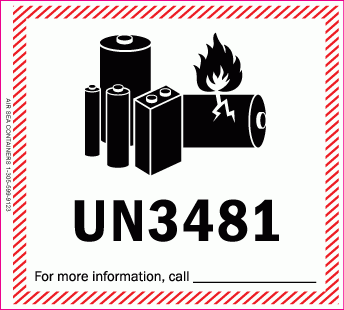
Key Features of the New Lithium Battery Label:
- Shape and Size: The label must be a rectangle measuring at least 120 x 110mm, with an optional reduction to 105 x 74mm for smaller packages.
- Design: The label must feature a red, hatched border (5mm wide), and a black and white symbol showing a group of batteries, one of which is damaged and emitting flames).
- Placement: The symbol must be positioned above the UN number, which corresponds to either lithium-ion or lithium-metal batteries or cells.
- Telephone number: A contact number must be provided for someone knowledgeable about the shipment. This number does not need to offer immediate emergency response guidance, but it must be monitored during the company’s regular business hours. Alternatively, an emergency response 24-hour phone number may also be used.
Compliance with International Regulations
These updated labels are mandatory for all modes of transport and ensure compliance with global safety standards. Proper labelling is critical to indicate the potential hazards associated with lithium batteries, especially during shipment.
The New Class 9 Lithium Batteries Label
A new Class 9 Lithium Batteries label has been introduced to replace the existing Class 9 label for shipments fully regulated as Class 9 hazardous materials. This label is specifically designed to indicate the unique risks posed by lithium batteries during transportation.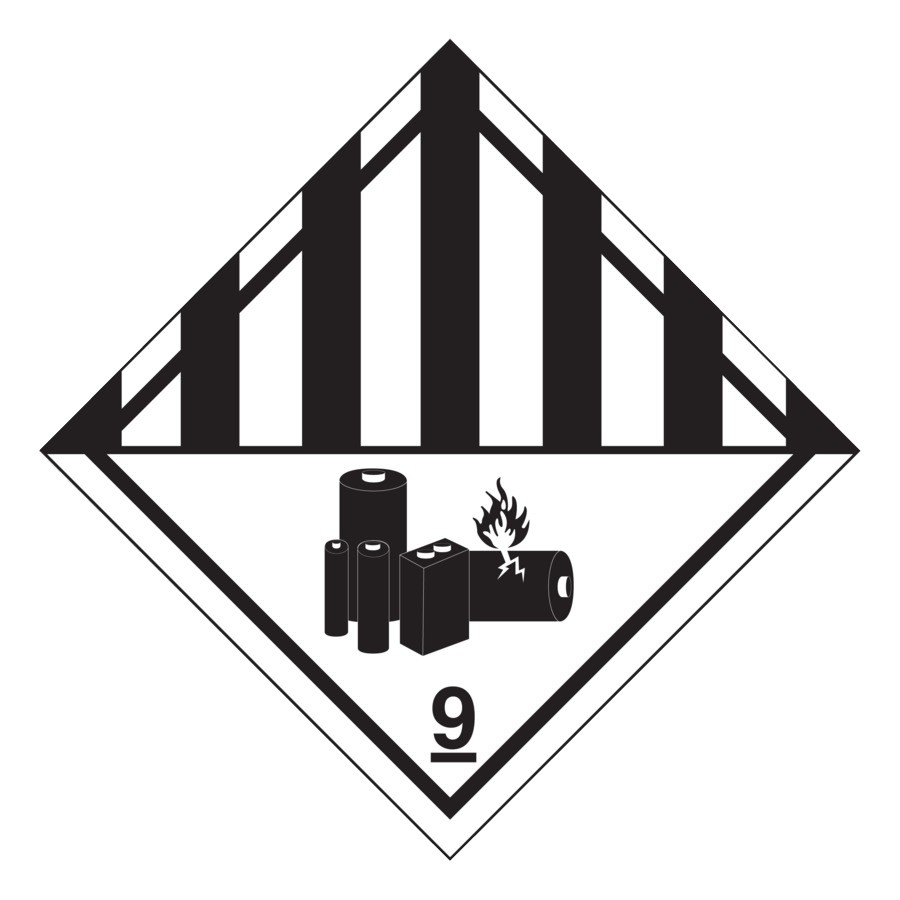
Key Features of the New Class 9 Lithium Batteries Label:
- Design: The label must feature seven vertical black stripes in the upper half.
- Symbol: The lower half must display a black-and-white symbol showing a group of batteries, with one damaged and emitting flames, to clearly signal the potential hazards.
- Number 9: An underlined number “9” must also appear in the lower half, indicating the classification of the shipment as miscellaneous dangerous goods.
This updated label is mandatory for shipments subject to full regulations, ensuring clear communication of the risks associated with transporting lithium batteries.
Class 3: Flammable Liquid Shipping Labels
Our Class 3: Flammable Liquid self-adhesive hazard labels are designed for shipments of hazardous materials (dangerous goods) in compliance with international safety standards. These labels ensure that flammable liquids are clearly identified during transport, promoting safe handling and regulatory compliance.
What Are Flammable Liquids?
Flammable liquids are defined as any liquid with a flash point of 60.5ºC (141ºF) or lower. These materials pose significant fire risks during transit, making proper labelling essential to prevent accidents and ensure safe transportation.
By using our Class 3 shipping labels, you ensure that your hazardous shipments meet regulatory requirements and are easily identifiable to all parties involved in handling the goods.
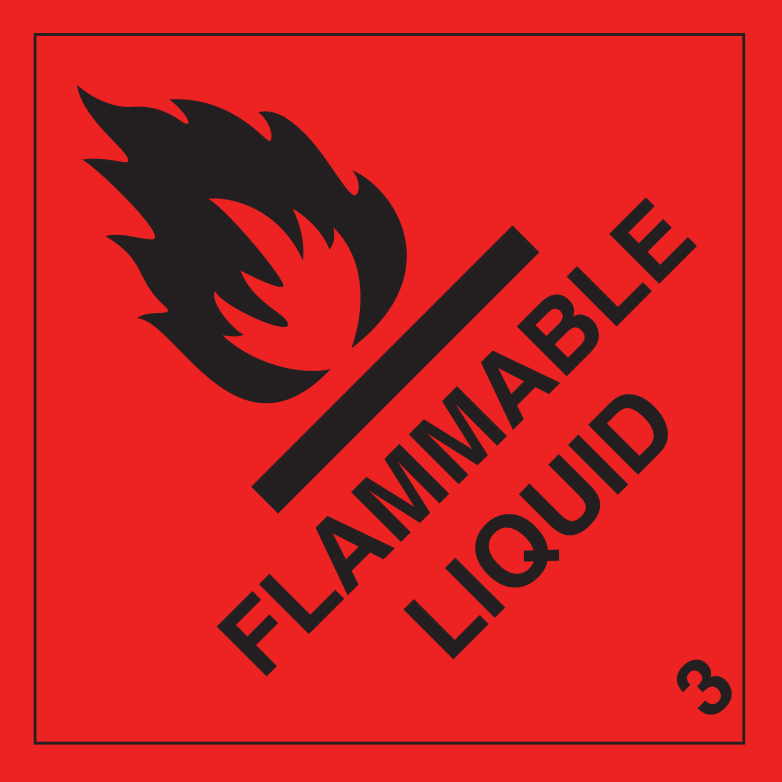
“This Way Up” Shipping Label
The “This Way Up” label is an essential transport and shipping label used to protect sensitive parcels from incorrect handling or improper storage. These labels feature two upward-pointing arrows, clearly indicating the correct orientation of the package to prevent damage during transit.
Key Features:
- Durable and Weatherproof: Designed for reliability, these labels are weatherproof, ensuring that critical handling instructions remain visible in all conditions.
- Clear Imprint: The bold, easy-to-read design with two arrows ensures handlers can quickly identify the correct positioning for safe transport.
By using “This Way Up” labels, you help safeguard your shipments and ensure proper handling throughout the logistics process.
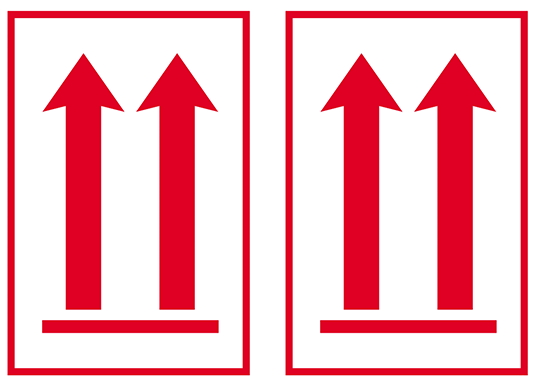
Stricter Requirements for Air Shipments
Stricter regulations now govern the air shipment of Lithium Batteries (Ion and Metal) when shipped without equipment. These batteries can no longer be transported on passenger aircraft and must instead be shipped via cargo aircraft or by ground transport.
Key Regulations:
Lithium-Metal Batteries (UN 3090): Since 2014, lithium-metal batteries shipped by themselves (not contained in or packed with equipment) have been banned from passenger aircraft due to safety concerns following two in-flight fires. Unstable, over-charged batteries were identified as a likely cause.
Lithium-Ion Batteries (UN 3480): As of April 1, 2016, lithium-ion batteries shipped by themselves are also prohibited as cargo on passenger aircraft. When transported via cargo aircraft, these batteries must be shipped at a state of charge (SoC) of no more than 30% of their rated capacity to minimize fire risks.
ICAO Review and Ban:
The International Civil Aviation Organization (ICAO) enacted these bans after extensive safety reviews. It is important to note that this restriction applies to cargo hold shipments and does not include lithium batteries inside personal devices carried by passengers—at least for now.
The ban will remain in effect until a new fire-resistant packaging standard is developed to enhance safety during transport. This packaging is expected to be introduced by 2018, but until then, compliance with the ban is mandatory for all ICAO member states.
Labelling and Compliance:
While most lithium-ion batteries are shipped via cargo vessels, approximately 30% are still delivered by air, with thousands of batteries often contained in a single cargo container. To comply with new safety regulations, updated IATA labelling requirements—including the new handling label and Class 9 label—became effective on January 1, 2017.
Request a call back
| OUR RANGE OF LABELS & MATERIALS: | ||
| 3M Polyester | Ink Jet Receptacle | Recyclable Labels |
| A4 Laser Labels | Jet Gloss 90 | Sheet Labels |
| Anodised Aluminium | Laser Labels | Sprocket Fed |
| Blockout/Blackout | Loop Tags | Tags |
| Clear laminates | Metallised Silver/Polyester | Tamper Evident |
| Clear PE | Oven Proof | Tactile |
| Clear PP | Paper Direct Thermal (Eco or Topcoat) | Tickets |
| Domed | Paper Thermal Transfer (Matt Vellum or Gloss) | Vinyl |
| Dot Matrix Labels | Polyester (PET) | Void |
| Fabric & Woven Labels | Polyethylene (PE) | Ultra Destruct |
| Fan Fold Labels | Polypropylene (PP) | Window Stickers |
| Fan Fold Tags & Tickets | PVC | |
| Garden Centre Tags | Peel & Reveal | |
| RANGE OF ADHESIVES: | ||
| Acrylic based | High Tack | Ultra High Tack |
| Blockout / Blackout | Peelable | Ultra Low Tack |
| Chilled | Permanent | Void |
| Fastyre | Rubber Based | Water Resistant |
| Freezer | Tamper Evident | |
| LABEL RESISTANCE FOR: | ||
| Chemicals | Handling | Scuff Proof |
| Extreme High Temperature | Moisture | Sea & Salt Water (BS5609 Standard) |
| Extreme Low | Outdoor Exposure | Solvents |
| Grease | Scratch Proof | UV Exposure |
| PRINTER & CODING RIBBONS: | |
| Coding Ribbons Colours | Full/Resin Ribbons |
| Coding Ribbons Full/Resin | Hot Foil Ribbons |
| Coding Ribbons Wax/Resin | Near Edge Wax/Resins Ribbons |
| Cold Stamping Ribbons | Near Edge Full/Resins Ribbons |
| Colour Ribbons (Primary & Metallic) | Premium Wax Ribbons |
| Chemical Ribbons (chemical resistant) | Standard Wax Ribbons |
| Enhanced Wax Ribbons | Washable Ribbons (Textile / Clothing Printing |
| Our ribbons can meet the following certifications : | ||
| Food Contact Europe | RoHS | Halogens |
| Heavy Metals | Marine shipping (BS5609) | California Proposition 65 |
| REACH/SVHC | Food Contact USA | Print durability (UL) |
| Drug Master File | ||
![]()
